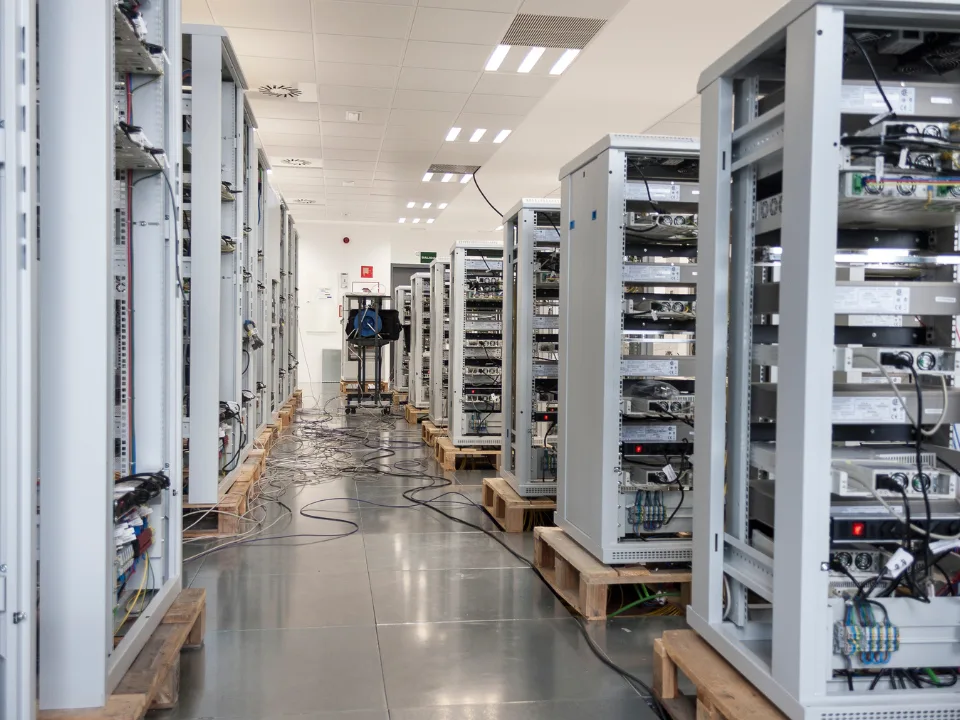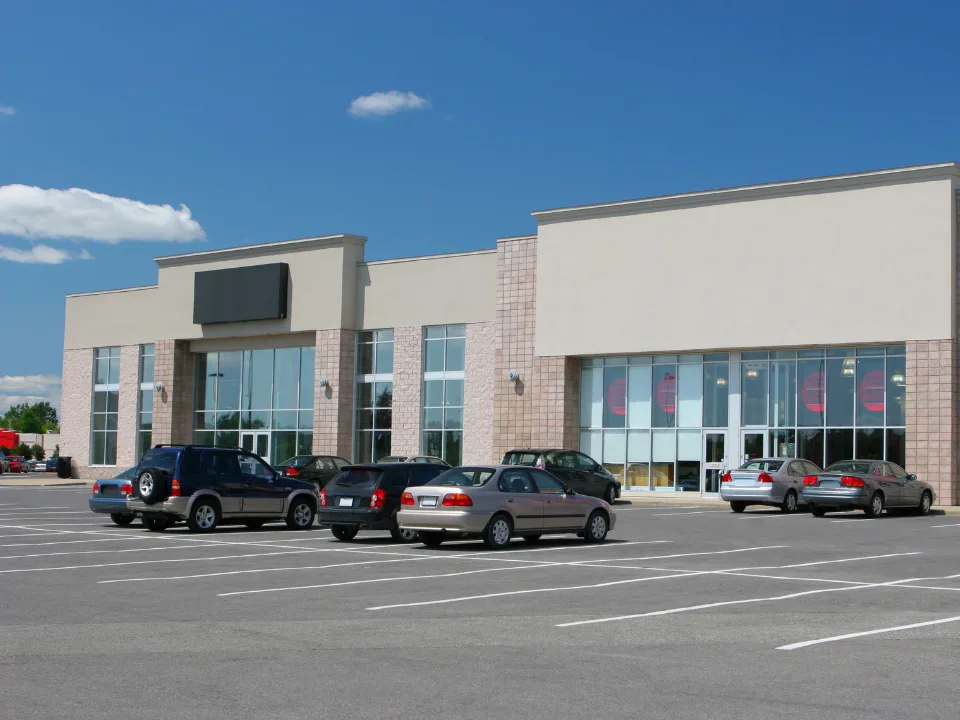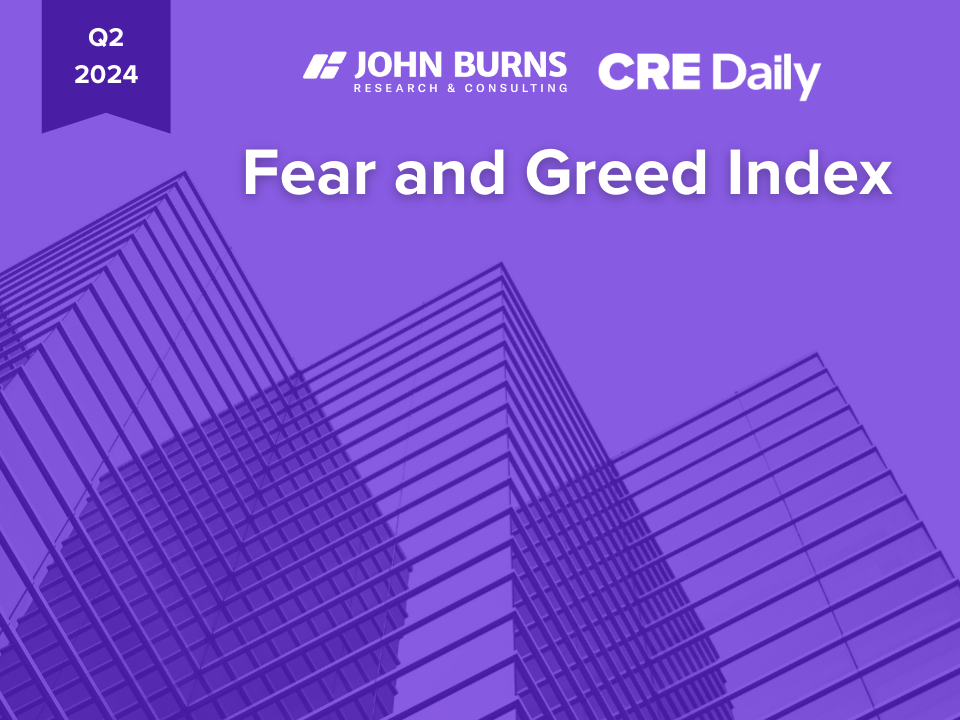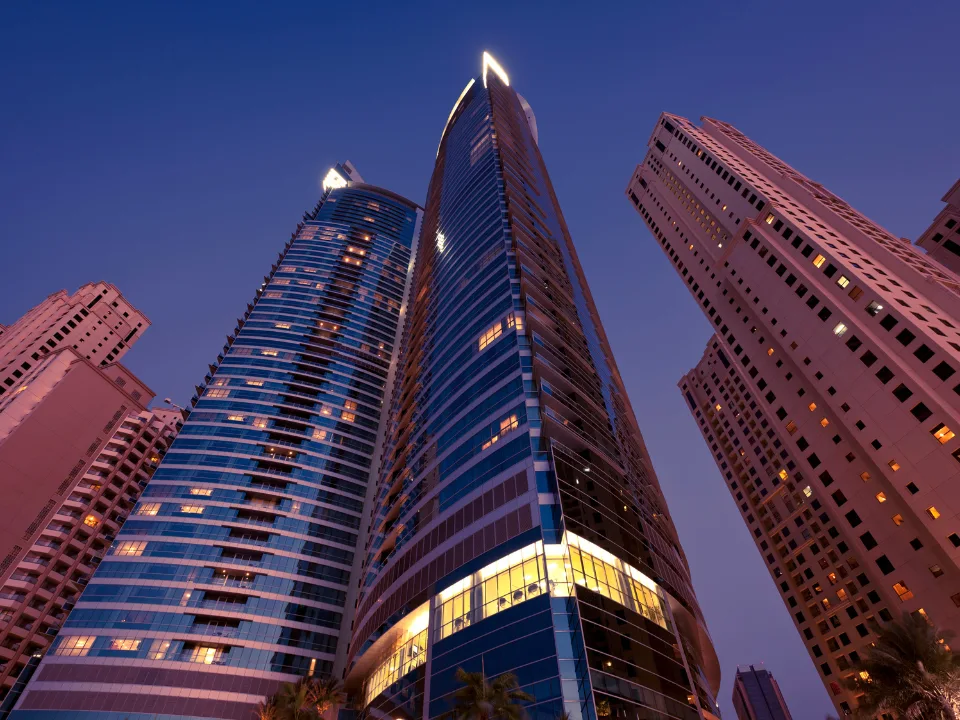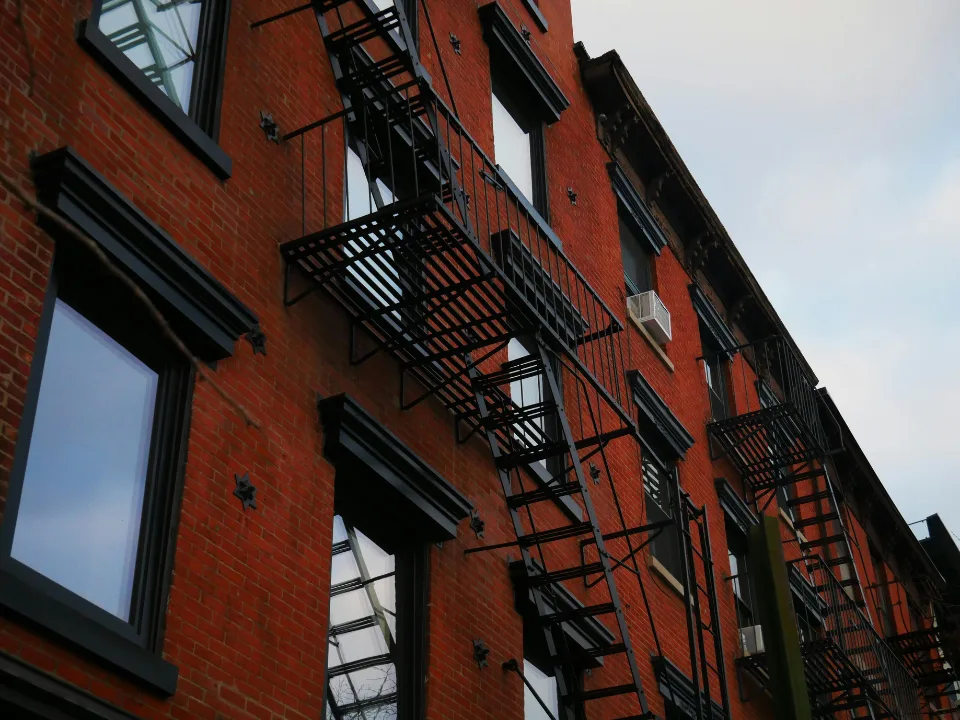- 38% of investors believe asset values have already bottomed out, while 18% expect the market to bottom before EOY.
- Asset value growth is expected in all CRE asset classes except office as interest rates are anticipated to continue coming down.
- 75% of investors reported double-digit insurance cost growth, a significant headwind for CRE growth across regions.
The Burns + CRE Daily Fear and Greed Index measures investor sentiment across the US commercial real estate industry, offering insights into whether property values and development are likely to increase or decrease each quarter.
The 2Q24 Fear and Greed Index is stable at 53 out of 100, up slightly from 52 in 1Q24. Sector scores range from 43 (office) to 58 (multifamily). Index values below 45 indicate a contracting market, while those above 55 suggest expansion. Values between 45 and 55 reflect a market balanced with buyers and sellers.
Burns + CRE Daily Fear and Greed Index
Download your FREE copy of the 2Q24 survey findings below.
"*" indicates required fields
By downloading, you agree to our Terms and Privacy Policy. You will also start receiving CRE Dailys free newsletter. You can unsubscribe anytime.
Improving Investor Sentiment
The Burns + CRE Daily Fear and Greed Index, which gauges investor sentiment across sectors like multifamily, industrial, retail, and office, reflects growing optimism after the Federal Reserve’s first interest rate cut in 4 years.
In 2Q24, 38% of survey respondents believe asset values have already bottomed out, while 18% expect this will happen by the end of 2024. Meanwhile, the Fear and Greed index itself stood at 53 out of 100, inching up from 52 in 1Q24. While scores for the multifamily sector reached a high of 58, office properties lagged behind at 43, signaling ongoing struggles.
“Commercial, except for office, has been quite resilient. I think we are near the bottom, and a few rate cuts from the Federal Reserve will be a large tailwind for the industry,” said one CRE investor.
Multifamily Outlook
For the first time in the survey’s history, multifamily investors are expecting positive asset growth in the next six months, driven by strong demand and the potential for even lower interest rates.
A solid labor market has also boosted absorption rates, with 57% of multifamily investors planning to increase their exposure in the coming months. In contrast, only 7% plan to reduce their investments.
Office Challenges
The office sector, however, remains under pressure, particularly due to remote work. Office asset values have dropped 20% YoY, with nearly 43% of surveyed investors expecting lower values through 2025.
However, some investors see a bottoming out, particularly in newer Class A office buildings, while older Class B and C offices continue to face hurdles and headwinds.
“The market remains bifurcated. Class A offices, especially for those less than five years old, are incredibly strong… while Class B offices older than 15 years have not found a bottom,” shared one investor.
Insurance Rate Headwinds
In addition to interest rates, rising insurance costs continue to impact CRE across asset classes. A striking 75% of investors reported at least a 10% YoY increase in insurance premiums, with some in high-risk areas seeing premiums more than double.
These rising insurance costs pose a substantial challenge to growth, particularly in regions prone to natural disasters like the U.S. South (and South Florida, in particular) and the West Coast.
The Path Forward
As inflation eases and capital becomes more accessible, CRE investors are cautiously optimistic that asset values will recover, especially in sectors like multifamily and industrial.
However, headwinds like insurance costs and lingering challenges in the office sector will continue to shape the recovery’s pace.
